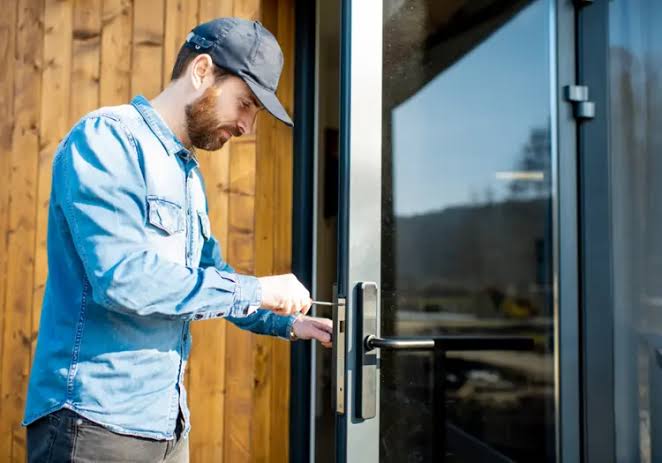Introduction
A fire can cause devastating damage to a home or business, leaving behind not only structural destruction but also smoke residue, soot, and lingering odors. The aftermath of a fire is overwhelming, but the recovery process is made manageable with the right expertise. Fire damage restoration is a specialized service aimed at returning a property to its pre-fire condition, ensuring safety, cleanliness, and structural integrity.
A public insurance claims adjuster for fire damage is your advocate during difficult times. They handle complex claim procedures, evaluate property losses thoroughly, and fight to maximize your insurance settlement, ensuring you get the funds needed to repair your home or business after a fire.
This article will explore the critical aspects of fire damage restoration, the challenges it addresses, and why professional restoration services are essential for effective recovery. Whether dealing with minor smoke damage or major fire destruction, understanding the restoration process empowers property owners to make informed decisions during a stressful time.
Understanding Fire Damage and Its Impact
Fire damage encompasses more than visible burns. The destruction caused by flames is often accompanied by significant smoke damage, water damage from firefighting efforts, and contamination from soot particles. Each of these elements requires a specific approach to ensure comprehensive restoration.
Types of Fire Damage:
- Structural Damage: Flames can weaken walls, roofs, and support beams, compromising the safety of a building.
- Smoke Damage: Smoke penetrates surfaces, fabrics, HVAC systems, and even electronics, leaving behind harmful residues and odors.
- Water Damage: The water used to extinguish fires can soak into floors, walls, and personal belongings, leading to mold growth and additional deterioration.
- Soot Damage: Soot particles are highly acidic and corrosive, accelerating material degradation if not promptly cleaned.
Because of these complexities, fire damage restoration is a multifaceted process requiring specialized knowledge and equipment.
The Fire Damage Restoration Process
Restoring a property after a fire involves several key stages, each tailored to address specific types of damage and ensure a safe, thorough recovery.
1. Damage Assessment and Inspection
The restoration begins with a detailed inspection by trained professionals to evaluate the extent of fire, smoke, and water damage. This assessment determines which materials are salvageable and which require removal or replacement.
2. Securing the Property
To prevent further damage or unauthorized access, restoration teams often board up windows, doors, and damaged roof areas. This also protects the property during the restoration process.
3. Water Removal and Drying
If firefighting efforts caused water damage, the next priority is water extraction and drying. Industrial pumps, dehumidifiers, and air movers are used to remove moisture and prevent mold growth.
4. Soot and Smoke Cleanup
Cleaning soot and smoke residues is a delicate process. Special chemical sponges, vacuums with HEPA filters, and industrial cleaning agents are used to remove residues from walls, ceilings, HVAC ducts, and personal items.
5. Odor Removal
Smoke odors can linger long after visible damage is repaired. Techniques such as thermal fogging, ozone treatment, and hydroxyl generators are employed to neutralize odors and restore fresh air quality.
6. Repair and Reconstruction
Once cleaning and odor removal are complete, structural repairs begin. This can include drywall replacement, painting, flooring installation, and electrical system repairs. The goal is to restore the property to its original condition or better.
Why Professional Fire Damage Restoration is Crucial
Fire damage restoration is a complex task that involves more than just cleanup. Hiring a professional team provides several vital benefits:
Expertise and Training
Restoration professionals have the training and experience to handle the full spectrum of fire damage, including hazardous materials and structural safety concerns.
Advanced Equipment
Specialized equipment such as moisture detectors, air scrubbers, and industrial cleaning tools ensures thorough and efficient restoration.
Health and Safety
Fire aftermath can include toxic residues, compromised structures, and contaminated water. Professionals follow strict safety protocols to protect occupants and workers.
Insurance Assistance
Restoration companies often work directly with insurance providers, helping document damages and streamline claims, easing the financial burden on property owners.
Time and Cost Efficiency
Quick, professional intervention prevents secondary damage and reduces long-term costs associated with repairs and health issues.
Common Challenges in Fire Damage Restoration
Several factors make fire damage restoration uniquely challenging:
- Hidden Damage: Smoke and soot can penetrate deep into materials, requiring meticulous cleaning.
- Water Damage: Balancing fire cleanup with moisture removal to avoid mold.
- Odor Persistence: Smoke odors can be chemically bonded to materials, making them difficult to eliminate.
- Structural Integrity: Assessing and repairing fire-weakened structures safely.
- Personal Belongings: Salvaging items with sentimental or monetary value while ensuring contamination is removed.
Professionals are equipped to navigate these challenges effectively, ensuring the best possible restoration outcome.
Tips for Property Owners After a Fire
While the restoration company handles the heavy lifting, property owners can take steps to protect themselves and aid the process:
- Ensure Safety: Do not enter the property until cleared by fire officials.
- Contact Your Insurance Provider: Report the fire promptly and document damages.
- Avoid DIY Cleanup: Attempting cleanup without proper knowledge or equipment can worsen damage.
- Keep Records: Maintain detailed records of damages and communications with restoration and insurance companies.
- Secure the Property: If safe, board up openings to prevent theft or further damage.
Following these guidelines helps ensure a smoother restoration journey.
Preventing Fire Damage in the Future
After restoring your property, consider measures to reduce the risk of future fires:
- Install and regularly test smoke detectors.
- Maintain electrical systems and appliances.
- Keep flammable materials away from heat sources.
- Develop and practice a fire escape plan.
- Invest in fire-resistant building materials and landscaping.
Proactive prevention is key to minimizing the risk of fire and its devastating consequences.
Conclusion
Fire damage restoration is an essential process that addresses the complex aftermath of fire, smoke, and water damage. The expertise of professional restoration services ensures that properties are thoroughly cleaned, repaired, and made safe for occupancy again. Understanding the restoration process helps property owners navigate recovery with confidence and peace of mind.
When disaster strikes, timely and skilled Fire Damage Restoration not only salvages property but also restores hope and normalcy. Investing in professional restoration is an investment in safety, health, and long-term value.




